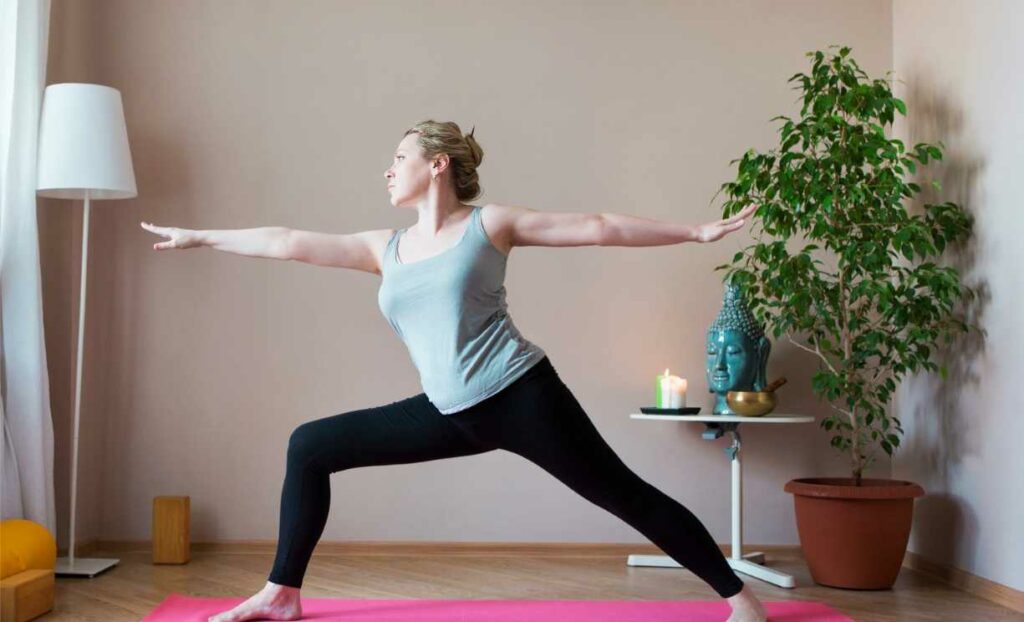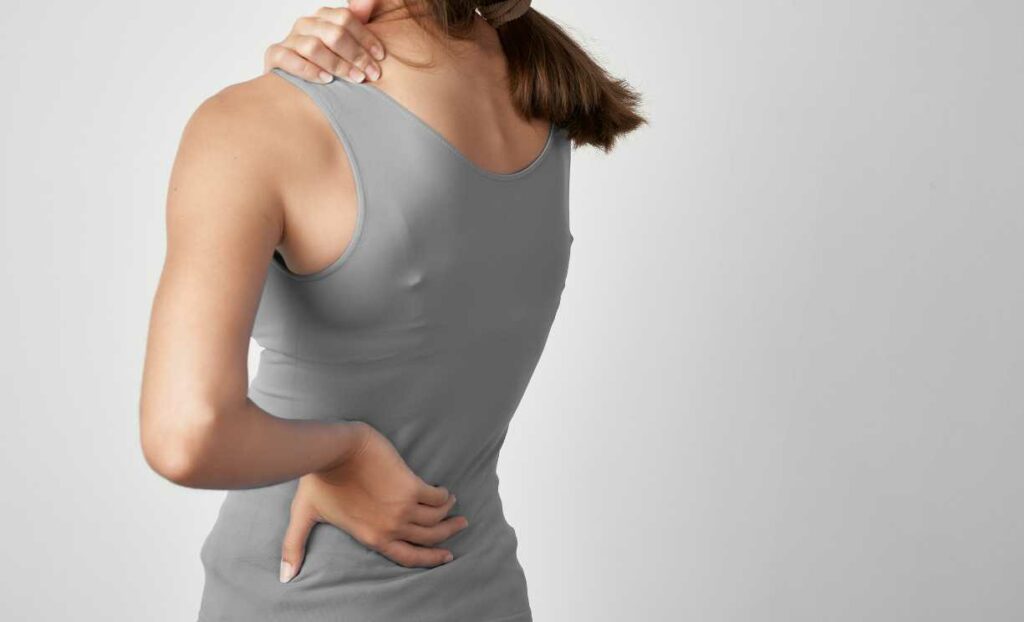Menopause is a natural and transformative phase in a woman’s life, but it often brings along a host of symptoms, including joint pain. Joint pain during menopause can significantly impact daily life, but the good news is that there are effective strategies for relief. In this blog, we’ll explore the causes of menopause-related joint pain and delve into various treatment options and lifestyle changes that can help women navigate this aspect of the menopausal journey.
Contents
Why Does Menopause Cause Joint Pain?
During menopause, the body undergoes hormonal changes, particularly a decline in estrogen levels. Estrogen plays a crucial role in maintaining joint health by contributing to the lubrication and reduction of inflammation in the joints. When estrogen levels decrease, it can lead to changes in the joints, causing symptoms like stiffness, discomfort, and inflammation. The reduction in estrogen may impact the balance of other hormones that affect joint function. Additionally, as women age, the natural wear and tear on joints over time can contribute to joint pain. While the exact mechanisms are not fully understood, the interplay of hormonal shifts and the aging process during menopause can contribute to the development of joint pain.
Treatment For Menopause Joint Pain?
Treatment options for menopause-related joint pain involve a combination of lifestyle changes, self-care strategies, and, in some cases, medical interventions. Here are several approaches to consider for managing menopause joint pain:
- Balanced Diet: A well-balanced diet plays a vital role in managing joint pain. Focus on consuming a variety of fruits, vegetables, whole grains, and foods rich in omega-3 fatty acids, such as fatty fish. These foods have anti-inflammatory properties that can help reduce joint discomfort.
- Over-the-counter pain Relievers: Non-prescription pain relievers, such as acetaminophen or NSAIDs, can be effective in managing joint pain. However, it’s important to use them under the guidance of a healthcare professional to avoid potential side effects.
- Weight Management: Maintaining a healthy weight is crucial for reducing stress on weight-bearing joints. Losing excess weight, if necessary, can significantly alleviate joint pain and improve overall joint function.
- Hormone Replacement Therapy (HRT): HRT may be recommended by a healthcare professional to address hormonal imbalances during menopause. Estrogen replacement can help manage joint pain, but it’s important to weigh the potential benefits and risks based on individual health considerations.
- Supplements: Calcium and vitamin D supplements support bone health, which is closely linked to joint health. Omega-3 supplements, often found in fish oil, may have anti-inflammatory effects that benefit joint function.
- Physical Therapy: Working with a physical therapist allows for tailored exercises and stretches designed to improve joint function. A physical therapist can provide guidance on proper techniques and movements to alleviate joint pain.
- Mind-Body Techniques: Practices like mindfulness, meditation, and deep breathing exercises help manage stress, which can indirectly impact joint pain. Stress reduction is essential for overall well-being, including joint health.
Lifestyle Changes For Menopause Joint Pain
Lifestyle changes play a crucial role in managing menopause-related joint pain. Here are specific lifestyle adjustments that can contribute to alleviating joint discomfort during this transformative phase:
- Regular Exercise: Incorporate regular low-impact exercises such as walking, swimming, or cycling into your routine. These activities help maintain joint flexibility and strengthen supporting muscles, reducing the impact on your joints.
- Hydration: Stay well-hydrated by drinking plenty of water throughout the day. Proper hydration is essential for joint lubrication and overall bodily functions.
- Ergonomics: Pay attention to your posture and workspace ergonomics. Ensure that your desk, chair, and computer setup support good posture to prevent unnecessary strain on your joints, particularly in the neck, back, and wrists.
- Footwear: Choose supportive and comfortable footwear. Proper shoes with cushioning and arch support can reduce impact on the joints, especially in the knees and hips.
- Joint-Friendly Activities: Opt for activities that are gentle on the joints, such as swimming or cycling. These exercises provide cardiovascular benefits without placing excessive stress on the joints.
- Heat and Cold Therapy: Use heat or cold therapy as needed. Applying a warm compress or taking a warm bath can soothe joint stiffness, while cold packs can help reduce inflammation and provide relief.
- Adequate Sleep: Prioritize quality sleep to support overall health, including joint function. Create a comfortable sleep environment, and establish a consistent sleep routine to promote restorative rest.
- Social Support: Connect with friends, family, or support groups to share experiences and seek emotional support. A strong social network can help manage stress and positively impact overall health.
- Joint Protection Strategies: Be mindful of your joint movements and employ strategies to protect them. This may include using assistive devices, modifying activities, or avoiding prolonged periods of repetitive motion.
When To See A Doctor?
If you’re experiencing persistent or severe joint pain during menopause, it’s important to schedule an appointment with your doctor. Seeking medical advice is crucial if the joint pain is significantly impacting your daily activities, sleep, or overall quality of life. Additionally, if you notice any swelling or redness, or if the joint pain is accompanied by other concerning symptoms, it’s a clear signal to consult with a healthcare professional. Your doctor can help determine the underlying cause of the joint pain, recommend appropriate treatments, and ensure that you receive personalized care tailored to your specific health needs. Don’t hesitate to reach out for medical guidance to address and manage menopause-related joint pain effectively.
Exercises To Relieve Menopause Joint Pain

Engaging in regular exercises can be effective in relieving menopause-related joint pain. Here are some exercises that can help alleviate joint discomfort:
- Walking: Walking is a low-impact exercise that helps maintain joint flexibility and strengthen muscles. Aim for a brisk, regular walk for at least 30 minutes most days of the week.
- Swimming: Swimming and water aerobics are excellent choices as they provide resistance without putting stress on the joints. The buoyancy of water reduces impact while promoting joint movement.
- Cycling: Cycling, whether outdoors or on a stationary bike, is a gentle way to improve joint mobility and strengthen leg muscles. Adjust the seat and handlebars to ensure proper alignment and reduce strain.
- Yoga: Yoga emphasizes gentle stretching, balance, and flexibility. Specific poses can target joints, providing relief and promoting relaxation. Choose classes or poses that focus on joint-friendly movements.
- Tai Chi: Tai Chi is a slow and graceful martial art that promotes balance, flexibility, and strength. Its gentle movements can be beneficial for joint health and overall well-being.
- Pilates: Pilates focuses on core strength, flexibility, and controlled movements. It can improve overall body strength and support joint function.
- Elliptical Trainer: Using an elliptical trainer provides a low-impact cardiovascular workout while minimizing stress on the joints. Ensure proper posture and use handrails for support if needed.
- Resistance Training: Light resistance training with bands or weights can strengthen muscles around the joints, providing support and stability. Focus on proper form to avoid strain.
- Range of Motion Exercises: Perform a gentle range of motion exercises for each joint, moving them through their full span without causing pain. This helps maintain flexibility.
- Stretching: Include daily stretching routines to improve flexibility and reduce stiffness. Focus on major muscle groups and joints, holding each stretch for about 15-30 seconds.
Conclusion
In conclusion, addressing menopause-related joint pain involves a multifaceted approach that combines lifestyle changes, exercises, and, in some cases, medical treatment options. The journey through menopause is unique for each woman, and finding the right treatment strategy requires a personalized approach. From incorporating joint-friendly exercises like walking, swimming, and yoga to making lifestyle adjustments such as maintaining a balanced diet and staying hydrated, women can actively manage and alleviate joint discomfort during this transformative phase.
By adopting a holistic approach that considers individual health needs, women can navigate menopause with resilience, maintaining joint health and overall well-being. Remember, the goal is not just to manage joint pain but to embrace this transition with vitality, allowing each woman to thrive during this significant phase of life.
If you are facing menopause related issues, menopause treatment at HerMantra can help. Book your free trial online menopause treatment session now.





You have observed very interesting points! ps decent web site.Blog money